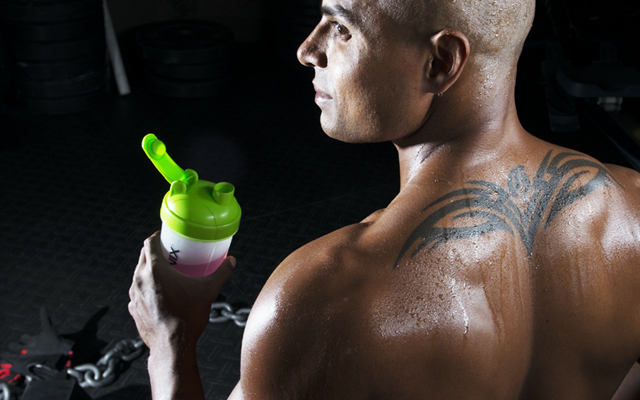When it comes to weight loss, athletes have different needs. Unlike the general population, an athlete’s goals are not focused exclusively on weight loss. While it’s good to watch the scale, what is most important is paying attention to body composition and performance markers.
Your first goal should be to keep or add muscle mass, which is the primary driving force behind performance. Loss of body fat should be your secondary goal. Having a healthy body composition is important to athletes not just because of how it looks, but also mainly for its function.
Most fat-loss tips are designed for the average sedentary person looking to shed a few pounds, but these tips aren’t much help to a serious athlete. Here are some evidence-based tips from scientific literature that can help athletes keep the muscle and cut the fat.
1. Keep Intensity Up
While you should avoid running yourself into the ground by training too often, you still need to continue to push yourself within your limits during your workouts. So if you want to preserve muscle mass, keep your training and performance up (1). Keep lifting heavy with good form while you’re losing fat to minimize muscle loss. For most athletes, three to four days of resistance training is effective. But pushing past five days a week is excessive.
2. Don’t Rely on Your Training to Lose Fat
Use your nutrition and supplementation as the driving force for fat loss. While you should include some cardiovascular exercise, the calories you could potentially burn though this type of workout pales in comparison to what you can do with your nutrition. Including two to three sessions of high-intensity interval training, or HIIT for short, over the week is a great way to boost your metabolism (2, 3). HIIT can also help decrease your appetite and save you time in comparison to long sessions of low-intensity steady cardio (2, 3). Another plus is that you won’t feel exhausted even as you accelerate fat loss.
3. Bump Up Protein Intake
Consume at least 30 grams of essential amino acid-rich protein at each meal. This amount will bring you up to the threshold of 10 grams of the essential amino acids that your body cannot produce on its own and has been shown to be associated with improved body composition and muscle building (4). Consuming about 30 grams of high-quality protein four to six times over the course of the day without overly restricting your diet will facilitate body fat loss with minimal reductions in muscle and little impact on athletic performance (5). Another benefit is that a diet higher in protein is associated with increased feelings of fullness and greater thermogenesis making it a better option for the calorie-restricted athlete (6).
4. Have ‘Refeed’ Days
In order to maintain performance, you should reduce your energy intake as little as possible while still achieving weight loss. It may mean that you decrease the rate of weight loss, but it will help avoid unfavorable adaptations that could actually challenge successful fat loss long-term. Basically, if you restrict too much, you will end up losing muscle and decreasing performance. Whenever your total energy reduction is more than 25 percent of your maintenance level, having a “refeed” consisting of a single day where your energy intake is above 10 to 15 percent of your maintenance level can help stimulate metabolic rate and break weight-loss plateaus (7). Having a refeed day once or twice a week where you focus on eating more carbohydrates can be effective, especially when placed around your most intense training days (8).
5. Eat Your Veggies
Not only do vegetables provide an excellent array of vitamins and phytonutrients, but they also help to keep you feeling full after a meal. The benefits of vegetables for fat loss are related in part to their impact on “stretch receptors in your digestive system (9). With the exception of a few energy-dense items like potatoes or yams, vegetables provide a lot of nutrition for relatively few calories and are a rich source of filling fiber. By adding more vegetables to your meals, you will be able to eat a greater amount of food and feel more satisfied while consuming fewer calories overall.
Avoid Regaining What You’ve Lost
You spent all that time stripping off body fat, so don’t return to the diet that caused it in the first place. Scientific literature suggests that you can work back up to your previous energy intake by progressively increasing your amount of food in 5 percent steps every three days and then watch the scale and your image in the mirror carefully to minimize fat gains (7). Continue to keep many of the healthy habits you used while you restricted energy such as spacing your protein intake, eating plenty of vegetables, and generally making good nutritional decisions. The key is to find a balance between reducing too much and over indulging; moderation in the long run is the best path to success.
References
- Ballor DL, Katch VL, Becque MD & Marks CR. Resistance weight training during caloric restriction enhances lean body weight maintenance. Am J Clin Nutr. 1988 Jan; 47(1):19-25.
- Rosenkilde M, Reichkendler MH, Auerbach P, Toräng S, Gram AS, Ploug T, Holst JJ, Sjödin A & Stallknecht B. Appetite regulation in overweight, sedentary men after different amounts of endurance exercise: a randomized controlled trial. J Appl Physiol. 2013 Dec; 115(11):1599-609.
- Kelly B, King JA, Goerlach J & Nimmo MA. The impact of high-intensity intermittent exercise on resting metabolic rate in healthy males. Eur J Appl Physiol. 2013 Dec; 113(12):3039-47.
- Simmons E, Fluckey JD & Riechman SE. Cumulative Muscle Protein Synthesis and Protein Intake Requirements. Annu Rev Nutr. 2016 May 16. [Epub ahead of print]
- Pasiakos SM, Margolis LM & Orr JS. Optimized dietary strategies to protect skeletal muscle mass during periods of unavoidable energy deficit. FASEB J. 2015 Apr; 29(4):1136-42.
- Paddon-Jones D, Westman E, Mattes RD, Wolfe RR, Astrup A & Westerterp-Plantenga M. Protein, weight management, and satiety. Am J Clin Nutr. 2008 May; 87(5):1558S-1561S.
- Trexler ET, Smith-Ryan AE & Norton LE. Metabolic adaptation to weight loss: implications for the athlete. J Int Soc Sports Nutr. 2014 Feb 27; 11(1):7.
- Burke LM, Loucks AB & Broad N. Energy and carbohydrate for training and recovery. J Sports Sci. 2006 Jul; 24(7):675-85.
- Rolls BJ & Roe LS. Effect of the volume of liquid food infused intragastrically on satiety in women. Physiol Behav. 2002 Aug; 76(4-5):623-31.





